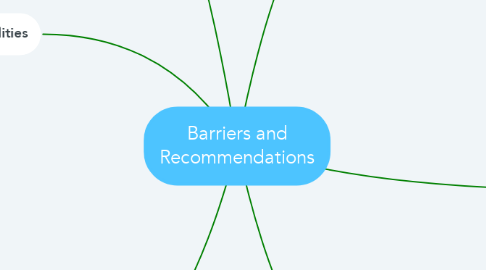
1. Policy and Legislation
1.1. There is a need for policies and protocols to have standardized implementation, students are receiving different treatment at different schools
1.2. JCPS need help weighing school safety and potential risk with the rights of individual students
1.3. Community issues that result in charges are automatically shared with JCPS
1.4. Community hearsay impacts school discipline and school placement
1.5. The policy/practice that youth who have dropped out must go to an alternative school upon return needs to be examined
1.6. Community Recommendations
1.6.1. Compulsory Education Law- GED needs to be offered in facilities
1.6.2. Compulsory Education Law- There need to be exceptions
2. Detention and DJJ Facilities
2.1. DJJ does not factor in education when making placement decisions
2.2. School work in facilities often involved independent work, completing packets, needs to be more engaging
2.3. There are educational inconsistencies from one facility to another
2.4. Programs in facilities repeat
2.5. Parental attendance at ARC meetings for youth in facilities is an issue
3. Alternative Schools and Re-Entry
3.1. Youth unclear on how many credits they have, if/when they will graduate
3.2. Reside schools don’t feel like the place for justice-involved youth. Once youth are justice-involved the school is uncomfortable with them being there
3.3. Youth suspended without clear information on number of days, reason, etc.
3.4. Youth can be stuck in cycle of alternative schools, get sucked into negative environment and unable to return to “regular school”
3.5. Safety Concerns
3.6. Strict dress code/inflexibility
3.7. Community Recommendations
3.7.1. Expectations for what youth need to do to exit alternative school unclear
3.7.2. There is a lack of coordination of successful transition from alternative school to home/reside school
3.7.3. Re-connecting to home school was difficult, felt isolated
3.7.4. Training needed for educators to create welcoming culture in schools when youth return
4. Special Education
4.1. Youth do not know if they have a 504 plan or IEP
4.2. Parents of youth with disabilities or special education needs do not have enough support. It is hard to find out who you need to contact about what, parents do not always know special education laws/rights, etc.
4.3. 504 plans or IEPs are not always updated
4.4. Community Recommendations
4.4.1. Learning disabilities not being identified/addressed which can lead to more behavior issues
5. Programming and Engagement
5.1. Exposure gap: youth don’t know what is available to them
5.2. Options needed for fast credit recovery
5.3. Idea of re-engagement centers within JCPS for youth who have dropped out to be able to come back to school
5.4. Community Recommendations
5.4.1. Schools need to help identify and assist families with basic needs
5.4.2. Educational options needed for older, under-credited youth for whom the GED may not be possible
5.4.3. More programs needed for younger students focused on emotional intelligence ex. the Compassionate Schools Project
5.4.4. Need programs in schools that youth will be more interested in including programs that can lead to certifications and licensure (ex. Cosmetology, vocational programs, etc.)
5.4.5. Transportation and technology barriers need to be addressed
5.4.6. Mentorship opportunities (gender specific)
